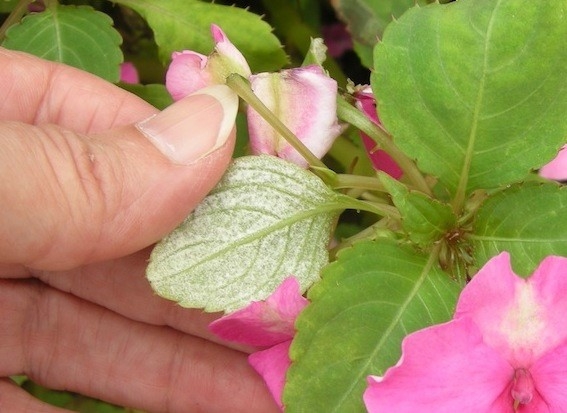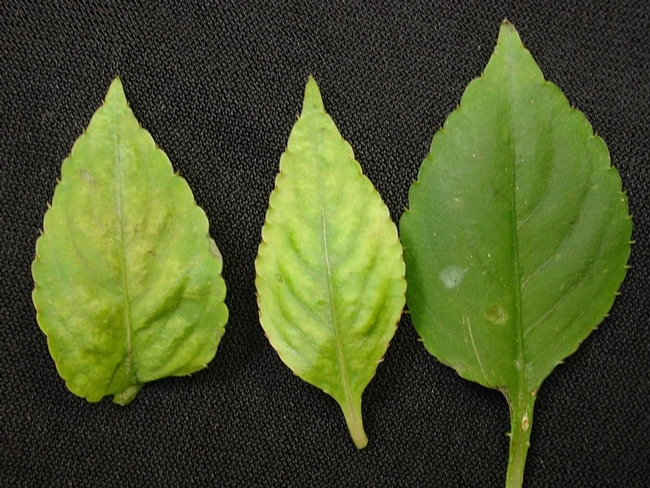One of California's most adored flowering plants, impatiens, is being threatened by a serious pest. You may have noticed the common garden impatiens missing from nurseries, retail store shelves, and landscapes, parks, and gardens this year.
Impatiens are dying from a relatively new plant disease called impatiens downy mildew, caused by the fungus-like, oomycete pathogen Plasmopara obducens. The pathogen primarily affects varieties of Impatiens walleriana, or hybrids with an I. walleriana parent and wild impatiens (I. balsamina). Note that this pathogen does not affect New Guinea impatiens (Impatiens hawkeri) or other bedding plant genera. This disease develops rapidly, with a few leaves on apparently healthy impatiens beginning to show slight yellowing and stunting followed by development of white, powdery spores on the undersides of leaves, and later, by leaf and flower drop. Plants are likely to become completely defoliated within several weeks. The pathogen produces airborne spores, which can travel for many miles, as well as swimming zoospores and oospores, which can survive within soil and plant debris for long periods and infect healthy plants when replanted in the same area.
Early detection is especially critical for this disease since chemical control has been shown to be ineffective once sporulation begins. Scout routinely to identify and remove diseased plants before epidemics can result. Removing infected plants may limit spread to other areas of the landscape.
Consider growing alternative bedding plants that will grow well in shady areas of the landscape but that will not be affected by the disease. Some examples include Bergenia hybrids, Caladiums, Coral bells, Lobelia, New Guinea impatiens, Sweet alyssum, and wax begonias.
This article was originally published in the December 2013 issue of the UC IPM Green Bulletin.
Author - Assistant Specialist in Cooperative Extension, Plant Pathology & Assistant Plant Pathologist - Ornamental Crops

